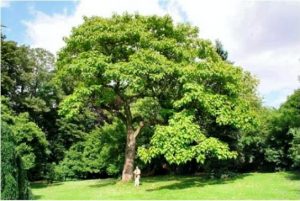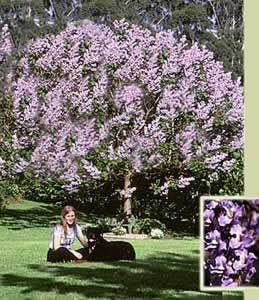Pavulonia a multipurpose tree of Chinese origin, is able to capture 50% of carbon dioxide, used to feed livestock, wood provides only 9 years, nourishing the earth’s crust and shade to avoid the loss of weight gained by high temperatures.
In Colombia, cut down nearly 600,000 hectares of forest per year (the same number of forested soccer), partly as a result of adaptation of land for farming, logging and illicit crops.bringing an environmental imbalance.
In order to reduce the impact of logging and deforestation is generated, the University of La Salle decided to investigate the paulownia, a tree species that can serve different functions, this means that a number of benefits from environmental to economic and industrial to favor sectors eg: timber, agriculture and forestry.
When researchers Colombian Vice-Rector for Research and transfer of know the benefits cited University, began working on the development of an innovation project of adapting the plant to the tropical agroecosystem for productive multi Colombia.
THE TREE “MAGIC”
“The paulownia is a native of the temperate forests of China, there are several species of this tree, but is presented to the Paulownia fortunei as most suitable for rapid development with rapid growth, balanced and continuous,” said Andres Morales of the VRIT La Salle University.
“Today companies to buy bonds in the stock market, it is strategic to tell you that the paulownia is capable of capturing 50% of carbon dioxide to replace oxygen. Also grows forming large groves that provide shade that can be useful for livestock, preventing the animals lose weight because of the heat and protect pastures that feed, “says Morales.
For the above benefits of paulownia you can tell, the tree “magic” because it also has leaves that contain high nutritional value comparable to alfalfa, so that the leaf is falling quality food for livestock and high for soil nutrition.
Economically
From an economic aspect, this species makes proper use of available resources and capacity for growth, because their generation from biomass is one of the highest in the plant kingdom, giving an important entry into the market for carbon credits.
This tree does not need to wait 15 years for income as with other crops of timber for the third year from its wood can be used.
IN ENVIRONMENTAL
The commitment to the environment is the main reference in this project, which is why the process of propagation is not seeded, but with production in vitro, thereby protecting the ecosystem which will adapt and it ensures that no be reproduced without prior laboratory treatment. This way there will be an invasive species, not displace native flora and wildlife stocking permit.
With the massification of Paulownia cultivation in different parts of Colombia would ensure that polluting companies in an exercise of corporate social responsibility to offset their carbon emissions by investing in eco-efficiency projects. For the timber industry would decrease from 15 to 9 years, the waiting time to achieve production. In addition to meeting silvopastoral functions would bring about benefits to soil nutrients through the leaves.
BENEFITS
The paulownia offers high returns, minimal environmental costs, soil improvement, possible income from sale of carbon capture titles and accessibility to the Forestry Incentive Certificate (CIF).
The paulownia tree compared to other big saver is also water, as during a growing season can reach a great development, similar to that could reach other tree species but in several periods of time.
To highlight the uses we can find the associated timber, such as general carpentry, construction of various furniture, cabinets, windows, musical instruments, toys, handicrafts, light construction, log cabins and trunks.
It is important to note that for strength and lightness in the timber, Paulownia is suitable for cladding buildings and transportation such as airplanes, light boats and caravans.
from Eluniversal, Colombian Newspaper



